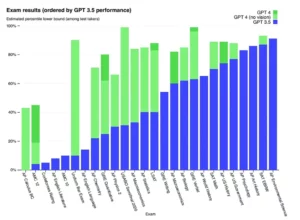Successful business models are built on solid foundations and continuously monitored using visual tools like SIPOC diagrams.
SIPOC, an acronym for Suppliers, Inputs, Process, Outputs, and Customers, is a powerful tool for process improvement. It provides a structured approach to comprehensively document and analyze business processes, leading to a profound understanding of how each component fits together and how the process can be improved.
The journey with SIPOC begins with exploration and ends with transformation. By taking the time to understand your processes, you can identify areas where improvement is needed. Once you have identified these areas, you can develop and implement corrective actions. As you make changes to your processes, your SIPOC diagram can be updated to reflect the new state of affairs.

What is a SIPOC diagram?
A SIPOC diagram, short for Suppliers, Inputs, Process, Outputs, and Customers, is a powerful visual tool used in process improvement and quality management. It serves as a structured way to comprehensively document a business process, offering a clear and detailed understanding of its various components and how they relate to one another.
The SIPOC diagram is divided into five sub-groups:
- Suppliers
- Inputs
- Process
- Outputs
- Customers
Suppliers
The first element of a SIPOC diagram is “Suppliers.” These are the sources or entities that provide the initial inputs to the process. Suppliers can be both internal and external to the organization. Their role is vital in ensuring the availability and quality of the inputs that the process relies on. For example, in a manufacturing process, suppliers could provide raw materials.
Inputs
The second element, “Inputs,” encompasses all the materials, information, or resources required to kickstart the process. This category includes anything needed to initiate the process. Understanding the nature and quality of inputs is essential because it has a direct impact on the efficiency and effectiveness of the process. In the context of a software development process, inputs might include requirements documents and user feedback.
Process
The central element in the SIPOC diagram is the “Process” itself. It represents the core activities, steps, and workflow that transform the inputs into outputs. This section outlines the specific tasks, decision points, and responsibilities within the process. For instance, in a customer service process, it would detail the steps from receiving a customer query to providing a resolution.

Outputs
“Outputs” are the results or deliverables generated by the process. These can take the form of products, services, reports, or any other tangible or intangible outcomes. In a sales process, the outputs may include sales contracts, invoices, and customer satisfaction reports.
Customers
The final element is “Customers,” which refers to the individuals or entities who receive and benefit from the process outputs. Identifying and satisfying customer needs is a fundamental objective in process management. In the case of a food delivery service, customers are the end-users who receive the meals they’ve ordered.
The SIPOC diagram provides a comprehensive overview of a process, making it an invaluable tool for process mapping, analysis, and optimization. It helps teams and organizations understand the process context, identify potential areas for improvement, and ultimately enhance the overall performance of the process.
Whether you are involved in manufacturing, service delivery, or any other process-oriented endeavor, a SIPOC diagram can be an indispensable resource for enhancing efficiency and customer satisfaction.
How to create a SIPOC diagram?
Creating a SIPOC diagram is a systematic process that involves several steps. First and foremost, you should identify the specific process you want to document with a diagram. This process should be well-defined, and you should have a clear understanding of its boundaries and objectives.
The initial step is to list the suppliers or sources of inputs for the chosen process. These suppliers can be both internal, such as other departments within your organization, and external, such as vendors, customers, or partners. Place these suppliers in the “Suppliers” column of your diagram.
Subsequently, you should determine and document all the inputs required for the process to function effectively. Inputs encompass materials, data, information, or any other resources that the process relies on. List these in the “Inputs” column.
To provide a visual representation of the process, create a sequential flowchart or diagram that outlines the steps involved. This flowchart is the “Process” column of your diagram. Ensure it includes decision points, actions, and key milestones.
Identify and define the outputs or deliverables generated by the process. These outputs can take the form of products, services, reports, or other outcomes. List them in the “Outputs” column.
Determine the customers, who are the end-users or beneficiaries of the process outputs. Understanding their needs and expectations is crucial. Place the customers in the “Customers” column.
Connect these elements by using arrows or lines. This visually represents the flow and relationships within the process: from suppliers to inputs, inputs to the process, the process to outputs, and finally, from outputs to customers.
After creating the initial diagram, it’s essential to review and validate it. Gather input from team members or relevant stakeholders to ensure accuracy and completeness.
Refine and make necessary adjustments based on feedback and review. Once the SIPOC diagram is accurate and complete, consider it finalized.

You don’t have to do all these manually
Various software tools and templates are available to assist in creating SIPOC diagrams, making the process more efficient and allowing for easier updates. These tools are invaluable for maintaining a clear overview of the process and facilitating continuous improvement
Here are some of the commercially available SIPOC diagram programs:
Visio
Visio is a widely recognized diagramming software utilized for generating SIPOC diagrams. It provides an extensive selection of templates and symbols tailored for creating high-quality SIPOC diagrams.
Visio’s versatility and customization options make it a preferred choice for professionals seeking to create visually appealing and informative SIPOC diagrams.
[embedded content]
Lucidchart
Lucidchart is a cloud-based diagramming software suitable for SIPOC diagram creation. This tool is known for its user-friendliness and offers an array of features, including collaborative capabilities and real-time updates.
Lucidchart facilitates teamwork and ensures that SIPOC diagrams can be easily maintained and updated in real-time.
[embedded content]
Creately
Creately is another cloud-based diagramming tool designed for SIPOC diagram development. It stands out with its ease of use and provides access to various templates and symbols for SIPOC diagrams.
Professionals can benefit from its simplicity and the range of features it offers for creating and maintaining SIPOC diagrams.
ProcessMaker
ProcessMaker is a comprehensive Business Process Management (BPM) software capable of creating and managing SIPOC diagrams. It excels in process modeling, automation, and analytics, making it suitable for professionals who require a holistic view of their processes.
ProcessMaker streamlines the creation and management of SIPOC diagrams within a broader BPM context.
[embedded content]
Bizagi
Bizagi is another BPM software with capabilities for diagram creation and management. It offers process modeling, automation, and collaboration features to support professionals in optimizing their processes.
Bizagi ensures a collaborative approach to diagram development, making it a valuable tool for teams.
[embedded content]
These professional SIPOC tools play a crucial role in process analysis and improvement, providing a range of features tailored to the needs of various industries and professionals, all without the hassle of creating one from scratch.
What is an alternative to a SIPOC?
An alternative to a SIPOC diagram is a COPIS diagram, short for Customers, Outputs, Process, Inputs, Suppliers. While SIPOC focuses on documenting the high-level components of a process, COPIS delves deeper into process analysis by including additional elements.
Here’s a brief comparison table which delves deep into SIPOC vs COPIS:
| SIPOC | COPIS |
| Provides an overview of the process. | Offers a more detailed analysis of a process. |
| Identifies suppliers, inputs, the process itself, outputs, and customers. | Emphasizes the customer’s perspective by starting with customers. |
| Suitable for a broad view of a process. | Lists outputs, the process, inputs, and suppliers in that order. |
| Suppliers: Customer, sales team, inventory team | Customers: Customer |
| Inputs: Customer order, customer’s shipping information, product inventory | Outputs: Shipped product |
| Process: Receive customer orders, verify customer orders, check product availability, process payment, ship product | Process: Receive customer orders, verify customer orders, check product availability, process payment, ship product |
| Outputs: Shipped product | Inputs: Customer order, customer’s shipping information, product inventory |
| Customers: Customer | Suppliers: Customer, sales team, inventory team |
Which one to use?
SIPOC diagrams are a good choice when you need to get a high-level view of a process. They are also helpful when you need to communicate the process to stakeholders who are not familiar with the details.
COPIS diagrams are a good choice when you need to understand the process from the customer’s viewpoint. They are also helpful when you need to identify opportunities to improve the process from the customer’s perspective.
Which one is better?
Neither SIPOC nor COPIS is better than the other. The best one to use depends on your specific needs. If you need a high-level view of the process, use SIPOC. If you need to understand the process from the customer’s viewpoint, use COPIS.
Featured image credit: Freepik.
- SEO Powered Content & PR Distribution. Get Amplified Today.
- PlatoData.Network Vertical Generative Ai. Empower Yourself. Access Here.
- PlatoAiStream. Web3 Intelligence. Knowledge Amplified. Access Here.
- PlatoESG. Carbon, CleanTech, Energy, Environment, Solar, Waste Management. Access Here.
- PlatoHealth. Biotech and Clinical Trials Intelligence. Access Here.
- Source: https://dataconomy.com/2023/10/12/what-is-sipoc-diagram-and-how-to-create/
- :has
- :is
- :not
- :where
- 1
- 14
- 24
- 302
- 500
- 7
- 8
- a
- access
- accuracy
- accurate
- actions
- activities
- Additional
- adjustments
- Affairs
- All
- Allowing
- also
- alternative
- an
- analysis
- analytics
- analyze
- and
- Another
- any
- anything
- appealing
- approach
- apps
- ARE
- areas
- Array
- AS
- assist
- Automation
- availability
- available
- based
- BE
- because
- beneficiaries
- benefit
- BEST
- Better
- Bizagi
- both
- boundaries
- broad
- broader
- built
- business
- Business Process
- Business Process Management
- business processes
- by
- CAN
- capabilities
- capable
- case
- categories
- Category
- central
- Changes
- check
- choice
- chosen
- clear
- collaboration
- collaborative
- Column
- commercially
- communicate
- comparison
- complete
- component
- components
- comprehensive
- Consider
- content
- context
- continuous
- continuously
- contracts
- Core
- could
- create
- Creating
- creation
- crucial
- customer
- Customer satisfaction
- Customer Service
- Customers
- customization
- data
- day
- decision
- deep
- deeper
- define
- delivery
- departments
- depends
- designed
- detail
- detailed
- details
- develop
- Development
- diagrams
- direct
- divided
- do
- document
- documentation
- documenting
- documents
- Dont
- each
- ease
- ease of use
- easier
- easily
- effectively
- effectiveness
- efficiency
- efficient
- element
- elements
- embedded
- encompass
- encompasses
- endeavor
- ends
- enhance
- enhancing
- ensure
- ensures
- ensuring
- entities
- essential
- Ether (ETH)
- example
- expectations
- exploration
- extensive
- external
- facilitates
- facilitating
- familiar
- Features
- feedback
- final
- finalized
- Finally
- First
- five
- flow
- focuses
- food
- food delivery
- For
- foremost
- form
- Foundations
- from
- function
- fundamental
- gather
- generated
- generating
- get
- Go
- Goals
- good
- Have
- helpful
- helps
- High
- high-level
- high-quality
- holistic
- How
- How To
- HTTPS
- identified
- identify
- identifying
- if
- image
- Impact
- implement
- improve
- improved
- improvement
- in
- include
- includes
- Including
- individuals
- industries
- information
- informative
- initial
- initiate
- input
- inputs
- instance
- intangible
- Interface
- internal
- into
- introducing
- invaluable
- inventory
- involved
- involves
- IT
- ITS
- itself
- journey
- jpg
- Key
- known
- leading
- Life
- like
- lines
- List
- maintaining
- make
- Making
- management
- managing
- manufacturing
- mapping
- materials
- max-width
- May..
- meals
- Members
- might
- Milestones
- modeling
- models
- monitored
- more
- more efficient
- Nature
- necessary
- Need
- needed
- needs
- New
- nor
- objective
- objectives
- of
- offering
- Offers
- on
- once
- ONE
- opportunities
- optimization
- optimizing
- Options
- or
- order
- orders
- organization
- organizations
- Other
- out
- outcomes
- outlines
- outputs
- overall
- overview
- partners
- payment
- performance
- perspective
- Place
- plato
- Plato Data Intelligence
- PlatoData
- Play
- points
- potential
- powerful
- preferred
- process
- Process Management
- processes
- Product
- Products
- professional
- professionals
- profound
- Programs
- provide
- provides
- providing
- quality
- range
- Raw
- reach
- real-time
- receive
- receiving
- recognized
- refers
- reflect
- Relationships
- relevant
- Reports
- representation
- represents
- require
- required
- Requirements
- Resolution
- resource
- Resources
- responsibilities
- Results
- review
- Role
- sales
- satisfaction
- scratch
- Second
- Section
- seeking
- selection
- serves
- service
- Services
- several
- shipped
- Shipping
- Short
- should
- simplicity
- Software
- software development
- solid
- some
- Sources
- specific
- stakeholders
- stands
- Starting
- State
- Step
- Steps
- structured
- success
- such
- suitable
- suppliers
- support
- table
- tailored
- Take
- taking
- tangible
- tasks
- team
- Team members
- teams
- teamwork
- templates
- than
- that
- The
- their
- Them
- These
- they
- this
- Through
- time
- to
- together
- tool
- tools
- Transform
- Transformation
- Ultimately
- understand
- understanding
- updated
- Updates
- use
- use case
- used
- User
- using
- utilized
- VALIDATE
- Valuable
- various
- vendors
- verify
- versatility
- View
- visually
- vital
- vs
- want
- Way..
- well-defined
- What
- What is
- when
- which
- while
- WHO
- widely
- with
- within
- without
- Work
- workflow
- would
- you
- Your
- youtube
- zephyrnet










